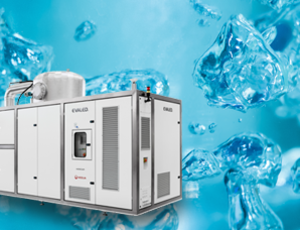The evaporation-concentration technique allows the aqueous part to be separated from the polluting substances of industrial effluents (dissolved or in suspension), achieving a completely purified distillate and a concentrate that significantly reduces waste management costs. The distillate obtained can even be reused. The process has a wide field of application in the pharmaceutical, metal, paper and chemical industries, among other industrial sectors.
Fresh natural water is a limited resource that forces us to make better use of available water and limit polluting discharges into the natural environment. This entails the best purification of wastewater (industrial or not) and the best management of the waste produced.
Industrial discharges are discharges from manufacturing (contact of water with gases, liquids and solids), from particular effluents that can be separated by specific treatments (electroplating pickling, condensate from paper mills and mother liquor from the agri-food industry, toxic and concentrated discharges, etc.), of general service effluents (boiler purges, regeneration of exchange resins, sludge from feedwater treatment, cooling tower purges) and of occasional effluents, accidental leaks due to maintenance or storage, floor washing, etc.
Most of these discharges have as their own characteristic a great difficulty of treatment by traditional purification methods (physical-chemical and biological processes) promoting the development and advancement of different water treatment technologies aimed at eliminating these impurities present in the water.
Description of the vacuum evaporation process
Evaporation is a continuous process for the production of high-quality water that has been separated from the contaminant phase by applying heat.
When working under vacuum, a lower boiling temperature is required, so the same evaporation is achieved with less energy. In this way, including vacuum conditions in the boiler of evaporation-based waste treatment systems increases the thermodynamic performance of the process: less heat is applied and energy is saved.
In distillation processes, the reduction of the boiling point of the liquid also allows, among other advantages, to distill liquids with a high boiling point and to avoid the decomposition of temperature-sensitive substances. Some of these substances may have value and their recovery without degradation is important.
Industrial evaporators with a vacuum pump allow these valuable substances to be recovered with significant energy savings.
Vacuum evaporation systems
There are different ways to perform vacuum evaporation. The most common and generic are:
Vacuum evaporation by hot water: these evaporators have a supply of hot/cold water in forced circulation and a tube bundle heat exchanger external to the boiling chamber. The heat necessary for the boiling of the water to be treated comes from the hot water that circulates through the heat exchanger, while the condensation of steam is achieved thanks to the cold water that circulates through the heat exchanger located above the boiling chamber.
Vacuum evaporation by mechanical vapor compression: attempts to recover the latent heat of condensation of the distillate as a source of heating the liquid to be evaporated. The temperature of the steam generated in the evaporation is increased by compression of the steam itself. In this way, the superheated steam can be recycled through
Energy-saving for evaporation
Avoid the cooling medium for condensation (cooling towers, etc.). There are two possibilities, one that uses the natural circulation of steam and the other that, through a more sophisticated design, recirculates the fluid, creating a descending film in the evaporation zone that favors the destruction of the foam and reduces fouling. Evaporation with mechanical vapor compression is the most energy-efficient electric current evaporation system.
Vacuum evaporation by heat pump: enjoys the refrigeration cycle of the freon gas, through the action of the compression of the gas that condenses and transfers heat to the liquid to be evaporated through thermal exchange. Subsequently, the gas is expanded by means of a thermostatic valve and the action of a condenser that cools the evaporated liquid and extracts the distillate. Freon flows in a closed and hermetic circuit. As the evaporation reactor is subjected to vacuum, it allows evaporation at temperatures above 40°C, so no other source of heat other than refrigeration is required, making it a very attractive process from an economic and management point of view.
This low evaporation temperature system allows a wide variety of applications, even for highly corrosive liquids using special alloys, evaporation systems to dry residue, highly encrusting or crystallizing liquids, etc.
Range of EVALED Equipment
EVALED units are compact systems, made of materials with high resistance to corrosion, which have a PLC that controls the evaporation process, so they require minimal supervision and are also easy to maintain.
EVALED AC - Vacuum evaporators using hot/cold water, with minimal electrical consumption.
EVALED RV - Mechanical vapor compression and forced circulation evaporators, particularly suitable for treating large volumes of wastewater and with low power consumption.
EVALED PC - Vacuum evaporators with heat pump. Very suitable solution for the treatment of small volumes.



